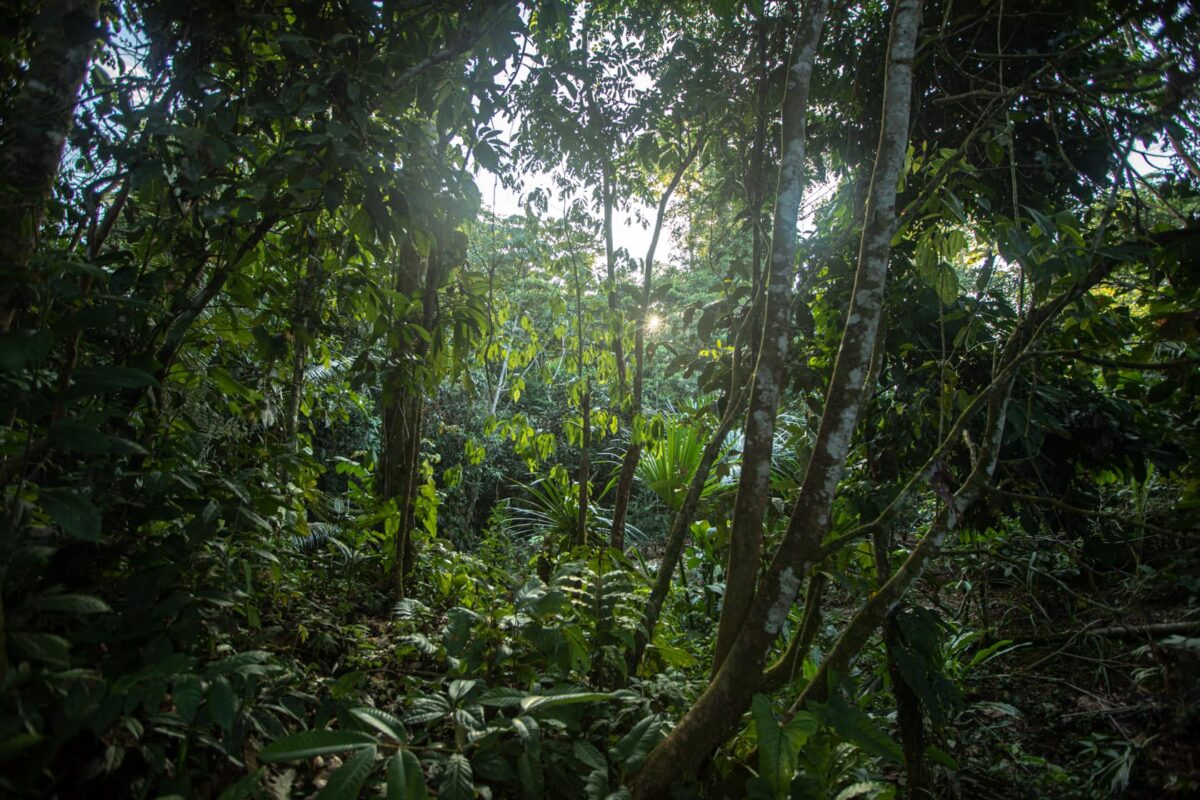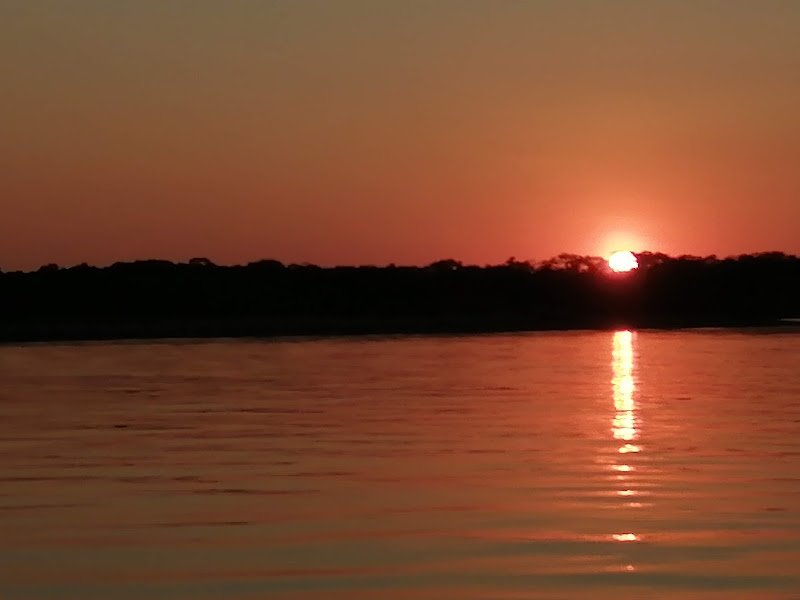It's 2025, and we're still overwhelmed by the ravages of extractivism, by the hissing of oil wells, by the silent deaths in the moors, by the people who don't want to be sellers of their land but rather its guardians.
In Ecuador, in the Amazon, one of the most powerful centers of resistance is the Kichwa people of Sarayaku, with their proposal of Kawsak Sacha (“living jungle”) and the political-cultural encounter KawsariThese are not distant utopias: they are urgent, paths that reveal that another world is possible if we recognize the dignity of the Earth, if justice is woven from the bottom up, if we stop seeing it only as a resource.
This essay delves into chapters II (Sarayaku and the Kawsak Sacha) and III (the Kawsari) of the book Rights of Nature and Territory in Ecuador, connects them to the current events of 2025, and raises the question of why this issue is not secondary, but central. Because what is happening to the Amazon rainforest and its Indigenous peoples cannot be considered solely a "local struggle" but rather another event in the global context that determines what is and is not appropriate in a civilized world that still wants to call itself that.
Sarayaku and the Kawsak Sacha proposal
The conflict between the state and the Dignified Kichwa Indigenous People in Resistance of Sarayaku dates back to the 1990s when the Ecuadorian State granted oil concessions to Block 23, including at least part of the Sarayaku territory, without prior, free and informed consultation.

In 2002, the oil company launched an explosives raid, an event accompanied by military force, which prompted a strong response from the Sarayaku people: peace camps and legal action. In 2012, the Inter-American Court of Human Rights issued a ruling. condemning the State for violations of the right to consultation, physical integrity and collective property, among others, and ordered the removal of the explosives.
The concept of Kawsak Sacha It then emerges not only as a legal defense, but as an understanding embodied in its own worldview: understanding the territory not as a thing, not as a resource, but as a subject of life, as an interrelation between human beings, spirits, forests, rivers.
It is not enough for the Constitution to recognize the rights of nature if the State does not respect what those rights imply in practice: real consultation, reparation, territorial sovereignty.
“Kawsak Sacha is a new form of peaceful political and legal resistance in defense of our territories against extractivism.”
— Tupak Amaru Viteri Gualinga, former Tayak Apu of Sarayaku. Quote from the Equatorial Prize (UNDP) case study, which documents Sarayaku's strategy to protect its territory and promote the legal status of a Living Forest.
Current status in 2025: progress, non-compliance, and resistance
1. Constitutional Court ruling and compliance status
-
In January 2024, Ecuador's Constitutional Court issued ruling 60-19 AN-23 in favor of Sarayaku, requiring the president (then Daniel Noboa) to comply with obligations arising from the Inter-American ruling and previous rulings, including the removal of explosives, full reparations, and the establishment of effective consultation and participation mechanisms.
-
That ruling gave the Executive branch six months to show concrete progress, which leads us to the fact that, in 2025, many communities and organizations are reporting minimal progress, especially in material terms: explosives remain a real danger.
2. Illegal mines, new concessions and territorial threats
- While some legal commitments are barely making progress, illegal mining is expanding rapidly in the Amazon. It is estimated that between 2020 and 2025, the affected area will have significantly increased, and ecologically fragile and Indigenous territories are being severely damaged.
- Furthermore, the government has authorized new legal mining concessions as part of its strategy to "control" illegal mining, but Indigenous leaders warn that this causes more harm than real solutions: increased extraction, pollution, and territorial conflicts.
3. The case of peoples in voluntary isolation
- In March 2025, the Inter-American Court of Human Rights issued a ruling in the case Tagaeri and Taromenane vs. Ecuador, which determined that the State violated the fundamental rights of these peoples (collective property, self-determination, dignified life, etc.) by allowing extractive activities in their territory and not respecting their decision to remain isolated.
- This decision compels the State to take urgent measures for protection, reparation, and institutional protocols. But it also raises concerns about whether there will be political will, funding, and effective mechanisms for implementation.
4. Social mobilization and indigenous leadership
- In 2025, CONAIE (the Confederation of Indigenous Nationalities of Ecuador), under new leadership, has publicly declared that it will strengthen the fight against extractivism, large-scale mining, the oil frontier, and projects that violate people's rights.
- A Regional Meeting of Indigenous Peoples of Latin America was also held in Sarayaku (May 2025), where ancestral conceptions of the territory were re-legitimized, and the defense of life and the rights of Nature were reaffirmed.
5. State policies, contradictions and gaps
- President Noboa's government, now in its second term (2025-2029), has faced tensions: some decisions are moving forward (or at least frequently announced) regarding environmental matters and the protection of natural areas, but at the same time, it approves laws or concessions that, for many communities, represent a risk of lack of protection.
- A concrete example: the recent law passed by the National Assembly on protected areas, which allows private or foreign participation in the management of conservation zones. Some claim that this violates constitutionally enshrined rights and international treaties, and could facilitate or conceal extractive activities in other forms.
SUMMARY OF THE CURRENT CONTEXT 2025 FOR SARAYAKU AND OTHER INDIGENOUS PEOPLES IN ECUADOR
- The court order exists, but its actual enforcement is slow and fragmented.
- There is a risk of persistent exploitation, pollution, and territorial fragmentation, both from legal and illegal mining.
- State decisions reveal contradictions in practice: recognition of rights versus actions that erode them.
- Sarayaku continues to fight, insisting on Kawsak Sacha as a way of life and as a vital historical necessity for survival in a world that is falling apart.

Kawsari as a political, symbolic and future-oriented practice
"Kawsari" is a gathering, a minga, a shared song of indigenous peoples, but also of allies, environmental defenders, youth, and women, to deliberate on how to defend life, how to articulate territorial resistance, and how to propose another way of relating to nature. A space with respect for a ritual, where ancestral visions are strengthened, knowledge is exchanged, and political networks are forged.
Although Sarayaku is the epicenter, the Kawsari establishes itself as a bridge with other Amazonian communities, with global movements in the common search for environmental and climate justice for the communities.
In May 2025, Sarayaku hosted a regional gathering of Indigenous and Tribal Peoples of Latin America in resistance. At that meeting, concepts of territory as a living entity were re-legitimized, demands were reaffirmed, and legal, cultural, and legitimate defense strategies for their territories and living spaces were disseminated.
Kawsari represents a platform for disseminating alternative proposals to extractivism, such as energy sovereignty, fair trade, carbon offset mechanisms, territorial autonomy, and the use of ancestral knowledge for environmental protection. A recent example: Sarayaku has developed its own system to address more "traditional" carbon offset mechanisms, focusing on community-based life plans that integrate conservation, not by selling the forest but by caring for it as part of a living forest.
The importance of this issue today for Ecuador and other peoples lies in the fact that it is not a symbolic gesture, but a matter of justice, health, climate, and cultural survival.
The Ecuadorian Amazon, one of the planet's greatest centers of biodiversity, which regulates water, climate, and life itself, is under threat from extractivism that contaminates soils, poisons rivers, sickens communities, and destroys ancestral memories.
The rights of Nature and Indigenous peoples, recognized in the Constitution and international rulings, lose meaning if they are not implemented in practice with measures such as the removal of explosives, the protection of untouched territories, and respect for prior consent.
Sarayaku and other landmark cases set legal precedents of global significance and demonstrate that defending the rainforest also means defending human health, culture, and life. In the midst of the climate crisis, proposals like Kawsak Sacha remind us that nature is not a commodity: it is a subject of dignity and the foundation of climate justice for present and future generations.
QUESTIONS AND ANSWERS
The Ecuadorian state has several obligations, including removing explosives from Sarayaku territory; guaranteeing free, prior, and informed consultations; halting extractive activities in inviolable zones; protecting the life, health, and integrity of Indigenous peoples; repairing material and immaterial damages; establishing protection protocols for isolated peoples; complying with national and international judicial decisions; and allocating state resources for these tasks.
There is partial progress: some rulings have been issued, there are institutional pronouncements, and there have been social protests that have forced the State to back down on certain projects (for example, mines).
But there is a significant gap in actual implementation, especially regarding material repairs, the removal of explosives, the effective closure of wells, and the protection of vulnerable territories. Many commitments are still at the 2025 declaration or planning stage, not fully implemented.
It is an international and constitutional right that obliges the State to inform Indigenous communities before any activity that may affect their territories (such as mining, oil, or infrastructure projects), and to do so in a culturally appropriate manner, including time, language, and access to all relevant information, allowing the community to decide without coercion, using its own forms of deliberation. It is not, nor should it be, considered a mere administrative formality: It involves being able to say “no” and having that “no” respected.
-
Legal: international and constitutional rulings, treaties such as ILO Convention 169.
-
Political: mobilizations, demands, alliances with social and environmental organizations, public pressure, demonstrations, participation in electoral processes.
-
Cultural: rituals, ceremonies, uses of language, ancestral education, recognition of traditional knowledge, aesthetic beauty as a form of resistance.
- Get informed and spread the word: share what's happening with others, support court orders, and demand transparency from the government.
- Participate in solidarity movements: donations, activism, support networks.
- Apply political pressure through civil organizations, media, and voting.
- Value products, knowledge, and territories by demanding environmental justice: don't buy products linked to destruction, demand corporate responsibility.
- Promote public policies that prioritize life, not extraction: clean energy, sustainable transportation, protection of wastelands, forests, water.
Bibliography and recommended links
-
Melo Cevallos, M. (2024). Sarayaku: from judicial victory to the construction of the Kawsak Sacha territorial proposal. In R. Lara Ponce, J. García Ruales & A. Valle Franco (Coords.), Rights of Nature and Territory in EcuadorQuito: Salesian Polytechnic University / Abya-Yala.
-
García Ruales, J. (2024). Kawsari: Kawsak Sachamanda Rimanakuy. In R. Lara Ponce, J. García Ruales & A. Valle Franco (Coords.), Rights of Nature and Territory in EcuadorQuito: Salesian Polytechnic University / Abya-Yala.
-
Inter-American Court of Human Rights (2012). Sentence: Kichwa indigenous people of Sarayaku vs. Ecuador.
-
Recent statements from the Sarayaku people: Manifesto of the Regional Meeting of the Indigenous and Tribal Peoples of Latin America in Resistance, Sarayaku, May 2025. Kichwa Indigenous People of Sarayaku
-
Amazon Frontlines – State deception in the Amazon, chronicles of resistance against oil concessions and extractivism.
-
Indigenous Debates - YONational investigations into illegal mining in the Ecuadorian Amazon.
![]()
